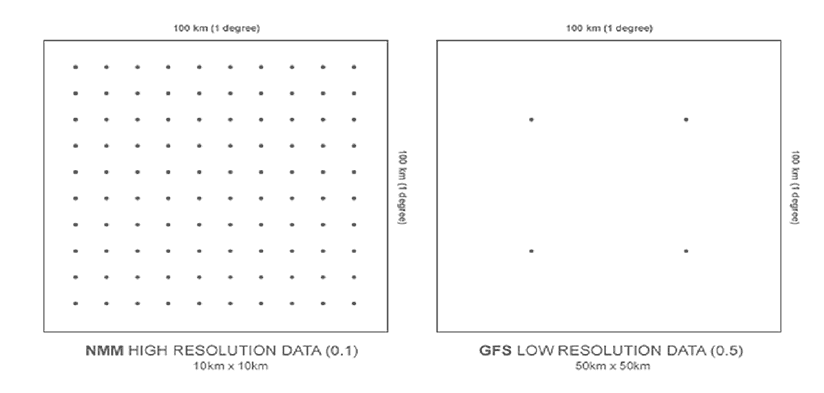Precision weather is our high-resolution data.
We think every mariner should use high-resolution weather forecasts, it's a critical aspect of safety at sea and it's not just for the professionals.
We produce our forecasts using the WRF/NMM, the very same model used by the U.S. met office, NOAA, to produce their high resolution data over the U.S.
A lot can happen within a 10,000 square kilometre area, i.e. a one-degree grid.
Let's take a typical 1.0-degree forecast; this produces one data point for every one hundred-kilometre grid, and then interpolates between the points.
Our 0.04-degree data produces 625 data points and interpolates between those providing a much more detailed and accurate picture of the weather zoomed in, especially over complex terrain or coastal regions.
That's quite a simple overview of this science and if you would like more detailed information about the model and its output please contact us at support@theyr.com
A lot can happen in three hours where weather is concerned.
Most weather forecast products rely on a three-hour time step or even six hours.
These can provide a good overview of the weather but it's not precise.
Our high-resolution data is produced on an hourly basis, providing a more accurate picture of the weather over a given period.
The differences in the scale, timing and nuances of a weather event can be clearly seen in the high resolution data images below compared to the low resolution.
The low resolution provides a good overview and the high resolution provides a significant improvement in the spatial and temporal aspects of the forecast.
The diagrams below also illustrate the basic difference between our subscription services using the high resolution NMM model, and our free services using GFS data.

The boxes represent a one by one degree (100km x 100km) map grid.
With the 0.5 degree GFS resolution there are four data points in this grid area while our 0.1 degree data provides 100 data points and our 0.04 model provides 625 data points for the same area.